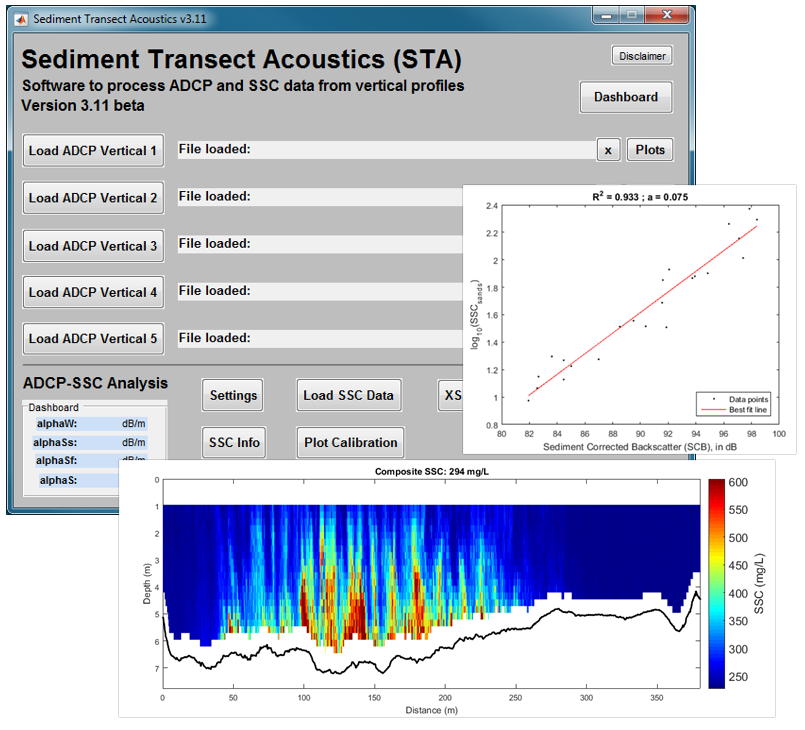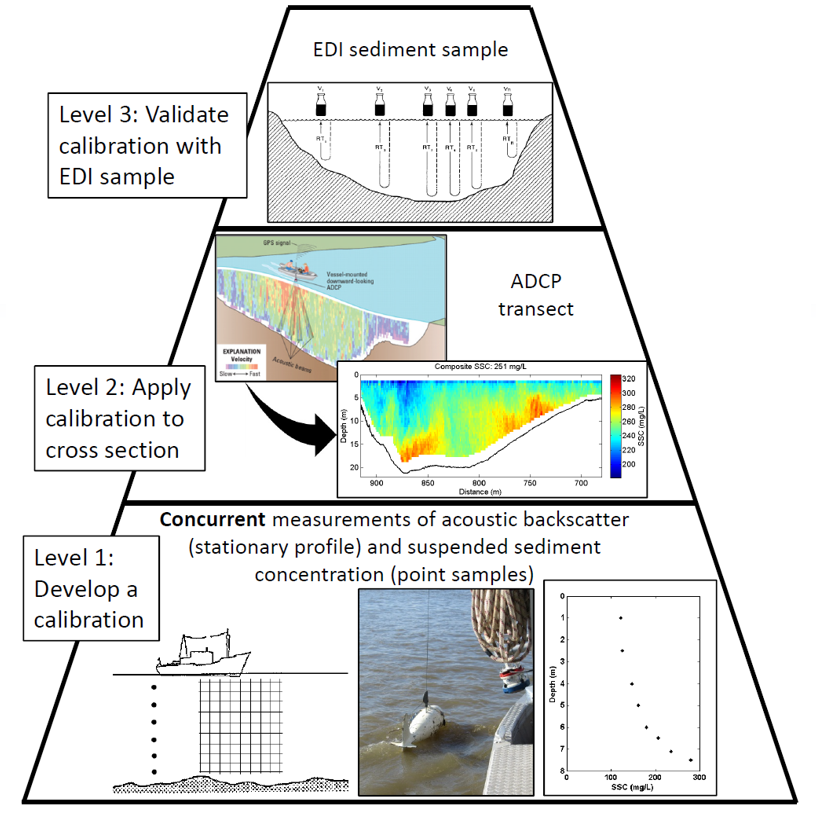Discrete Measurement Methods
A method for the measurement of high spatial and temporal resolution suspended-sediment concentration (SSC)
using a down-looking acoustics is in development. The high-resolution scales of
sediment data are a primary advantage and a vast improvement over other discrete methods for measuring SSC.
Although acoustic surrogate technology using continuous, fixed-deployment ADCPs (side-looking)
is proven, the same methods cannot be used with down-looking ADCPs due to the fact that the SSC and
particle-size distribution variation in the vertical profile violates theory and complicates assumptions.
Software

A software tool is being developed to assist in using acoustic backscatter from a down-looking, mobile ADCP
as a surrogate for SSC. This tool has a simple graphical user interface that loads the data, assists in the
calibration procedure, and provides data visualization and output options. This tool is designed to
improve ongoing efforts to monitor and predict resource responses to a changing environment. Because
ADCPs are used routinely for streamflow measurements, using acoustic backscatter from ADCPs as a
surrogate for SSC has the potential to revolutionize sediment measurements by providing rapid
measurements of sediment flux and distribution at spatial and temporal scales that are far beyond the
capabilities of traditional physical samplers.
The software is called Sediment Transect Acoustics (STA) and the following are some highlights:
- Software to assist in processing ADCP and SSC data from vertical profiles
- To calibrate acoustic backscatter with suspended sediment concentration
- For computing total SSC and sediment load
- And high-spatial resolution visualizations
Summary
Collaboration

Collaboration on analyzing available data or collecting new dataset is possible. These datasets can be used to test assumptions and answer key
questions in the use of down-looking ADCPs to estimate suspended sediment.
The required dataset would include (see figure above and list below):
- Point, isokinetic sediment samples
- Concurrent ADCP stationary profiles at each sampling vertical
- Moving-boat ADCP measurements
- Depth-integrated, isokinetic EDI samples
Please contact Molly Wood (mswood@usgs.gov), Justin Boldt (jboldt@usgs.gov), or Tim Straub (tdstraub@usgs.gov) if you have existing monitoring programs with sediment and
ADCP datasets that meet or can be adapted to meet these requirements
|